
Fall Math Topics

Fall Math Activities
These activities were designed to introduce or reinforce important math concepts and skills using seasonal themes. This is a natural fit for elementary classrooms where teachers and students celebrate the various holidays with literature and art projects. These activities allow teachers to also incorporate math activities that develop and support important mathematical concepts and skills.
Spider Activities
Each of these games and activities capitalize on students' fascination with spiders at Halloween time. The games/activities develop mathematical concepts using a seasonal theme.
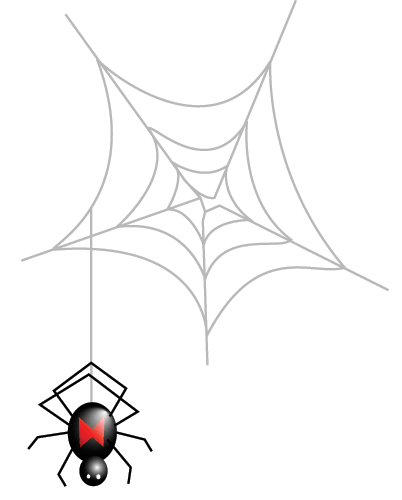
-
 Catch the Spider Game: students try to catch their opponent's spiders by identifying the correct coordinate pair. If the student fails to find the spider, then he/she is caught in the web and loses his/her turn for that round. There are two 5-point spiders and ten 2-point spiders to be caught, making the game a bit more challenging as students try to capture the most points.
Catch the Spider Game: students try to catch their opponent's spiders by identifying the correct coordinate pair. If the student fails to find the spider, then he/she is caught in the web and loses his/her turn for that round. There are two 5-point spiders and ten 2-point spiders to be caught, making the game a bit more challenging as students try to capture the most points.
- See More Spider Math Games including Spider Game-1, a twist on the game of Pig, Spider Game-2 which uses the difference of two dice, and the spider web map coloring game. All game mats, directions and recording sheets are available in pdf format for easy downloading and use in the classroom.
- Solve
 Insect and Spider Problems. Given the number of legs and heads, students must figure out how many are insects (6 legs) and how many are spiders (8 legs). The pdf file is formatted to print out individual problem cards that may be placed in a math center for student use. Answer key cards are also included.
Insect and Spider Problems. Given the number of legs and heads, students must figure out how many are insects (6 legs) and how many are spiders (8 legs). The pdf file is formatted to print out individual problem cards that may be placed in a math center for student use. Answer key cards are also included.
- NOTE: A very effective strategy is for students to assume that all heads are insects and determine how many legs were used. Then they distribute the leftover legs, 2 to each insect to create spiders until all of the legs are used.
- Students might also use the
 Insect and Spider Problem Spreadsheet as a strategy that uses technology to help in problem solving. Right click on the link and save the spreadsheet to your computer for easy classroom use. The spreadsheet is already configured for student use. They should only type in the yellow spaces as the spreadsheet will compute the other columns. Use an overhead monitor or projection system to model using the spreadsheet.
Insect and Spider Problem Spreadsheet as a strategy that uses technology to help in problem solving. Right click on the link and save the spreadsheet to your computer for easy classroom use. The spreadsheet is already configured for student use. They should only type in the yellow spaces as the spreadsheet will compute the other columns. Use an overhead monitor or projection system to model using the spreadsheet.
- See more spider activities on the Spider Math Theme page.
- In the
 Spider Count Game students roll a die, then color in that many spiders in their webs. The first student to color in all of his/her spiders wins the game.
Spider Count Game students roll a die, then color in that many spiders in their webs. The first student to color in all of his/her spiders wins the game.
-
 Spider Glyph is a simple coloring activity that captures data about students' experiences with and attitudes toward spiders.
Spider Glyph is a simple coloring activity that captures data about students' experiences with and attitudes toward spiders.
- Math Cats'
 Spider Math: students draw half of a spider on a coordinate grid then trade with their partner who must complete the spider so that it is symmetrical. Lastly, students must list the points, which when connected in order, will generate the symmetrical spider.
Spider Math: students draw half of a spider on a coordinate grid then trade with their partner who must complete the spider so that it is symmetrical. Lastly, students must list the points, which when connected in order, will generate the symmetrical spider.
- Students may watch movies of
 Spiders Creating Webs to better appreciate the geometry of the designs.
Spiders Creating Webs to better appreciate the geometry of the designs.
- Read Eric Carle's The Very Busy Spider then have older students complete the
 Spider Search handout which requires students to measure the angles formed by the strands of a spider's web. Younger students will enjoy analyzing and extending Very Busy Spider patterns.
Spider Search handout which requires students to measure the angles formed by the strands of a spider's web. Younger students will enjoy analyzing and extending Very Busy Spider patterns.
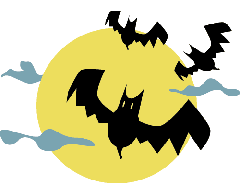
Bat Math
Bats are a common theme at Halloween. Use these resources to capitalize on student interest in bats and develop student understanding of common mathematical patterns.
- Read There Was an Old Lady Who Swallowed a Bat by Lucille Colandro, then;
- Enjoy the
 Batty Old Lady Probability activities.
Batty Old Lady Probability activities.
- Use Scholastic's
 Edible Estimation suggestion to incorporate measurement into this book talk. Scroll down the Scholastic page to locate this section.
Edible Estimation suggestion to incorporate measurement into this book talk. Scroll down the Scholastic page to locate this section.
- Enjoy the
- See more bat math activities on the Bat Math Theme page. New activities include the Fat Bat Game, bat problem solving tasks, and bat graphing ideas.
-
 Bat Math Quiz incorporates bat facts with problem solving for older math students.
Bat Math Quiz incorporates bat facts with problem solving for older math students.
- Bat Symmetry: Have students create a
 Bat mask, using the pattern provided and fold to examine the symmetry of the design. Or adapt this craft for older students to emphasize the symmetry of the bat design. Create a "half-pattern" for the bat. Students should fold a piece of black construction paper, trace the half-bat, then cut it folded. Unfolding the cut design creates a full, symmetrical bat. Decorate with symmetrical eyes, etc.
Bat mask, using the pattern provided and fold to examine the symmetry of the design. Or adapt this craft for older students to emphasize the symmetry of the bat design. Create a "half-pattern" for the bat. Students should fold a piece of black construction paper, trace the half-bat, then cut it folded. Unfolding the cut design creates a full, symmetrical bat. Decorate with symmetrical eyes, etc.
- See Pascal's Bats for a timely discrete math lesson.
- See Pascal Activities from the Fall 2005 collection including Pascal's Pumpkins and Pascal's Ghosts.
- See Bat Math-Literature Connections for information on the Kathi Appelt Bats series which build on mathematical patterns and themes.
Seasonal Counting & Addition Mats
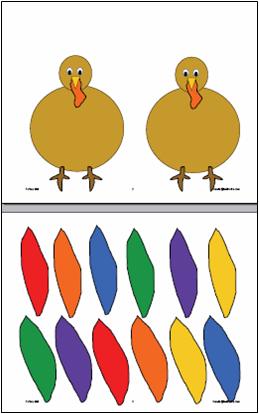
Seasonal mats are a welcome addition to the classroom math center. Teachers may use these in a number of ways to help students master math skills:
- Counting: student rolls a die or selects a card, and places that many feathers on one turkey. The student then rolls the die again and places that many feathers on the other turkey. The student should then count the total feathers and either write or select a
 number card to express the total.
number card to express the total.
- Write Number Sentences: the student follows the same procedure as above, except that he/she writes a number sentence to describe the results of the dice rolls.
- Quick Counting Game: student pairs each follow the procedure for rolling the die, placing that many feathers on the first turkey, etc., writing a number sentence or selecting a number card. The student with the larger number wins the game. Or, use a
 More-Less Spinner to add more suspense to the win. After students finding their totals, they spin the More-Less Spinner to determine who wins the round, adding practice of another math skill to the quick game.
More-Less Spinner to add more suspense to the win. After students finding their totals, they spin the More-Less Spinner to determine who wins the round, adding practice of another math skill to the quick game.
- New Seasonal Mats:
-
 Turkey Mat and Feathers, as pictured at left
Turkey Mat and Feathers, as pictured at left
-
 Pumpkin Mat
Pumpkin Mat
-
 Crazy Spider Mat: students use small pipe cleaner legs to create crazy spiders. First die roll tells student how many legs to add to one side of the spider. The second die roll tells students how many legs to add to the other side of the spider. How many legs does his/her spider have in all? If it's not 4 on each side, then the student has created a Crazy Spider.
Crazy Spider Mat: students use small pipe cleaner legs to create crazy spiders. First die roll tells student how many legs to add to one side of the spider. The second die roll tells students how many legs to add to the other side of the spider. How many legs does his/her spider have in all? If it's not 4 on each side, then the student has created a Crazy Spider.
-
- Other Seasonal Mats:
Fall Glyphs
Each of these glyphs capture data about students in a visual mode. Students should analyze the class data by creating tally charts, Venn diagrams, bar graphs, etc. and writing about what they learned from looking at the glyphs of their classmates.
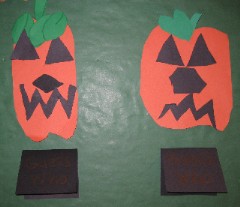
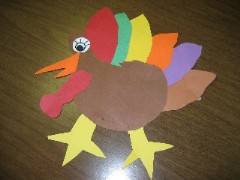
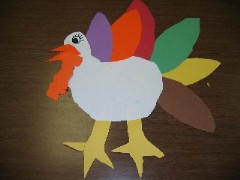
- Check out Shari Sloane's outstanding
 Glyphs Resource page for pictures of glyphs, pdf handouts of glyph legends and math-literature book connections for all seasons. The collection includes a scarecrow glyph, apple glyph, pumpkin glyph, haunted house glyph, turkey glyph and owl glyph.
Glyphs Resource page for pictures of glyphs, pdf handouts of glyph legends and math-literature book connections for all seasons. The collection includes a scarecrow glyph, apple glyph, pumpkin glyph, haunted house glyph, turkey glyph and owl glyph.
- Jack-o-Lantern Glyph from Mathwire.com Fall 2006 Math Activities collection.
-
 Scarecrow Glyph
Scarecrow Glyph
-
 Jack-o-Lantern Glyph
Jack-o-Lantern Glyph
-
 Pumpkin Glyph
Pumpkin Glyph
-
 Witch Glyph
Witch Glyph
-
 Turkey Glyph
Turkey Glyph
- See
 Owl Glyph: scroll down to the bottom of the page for pictures and pdf files
Owl Glyph: scroll down to the bottom of the page for pictures and pdf files
-
 Haunted House glyph: scroll down page for pictures and pdf files
Haunted House glyph: scroll down page for pictures and pdf files
Fall Coordinate Graphing Activities
These activities require students to use coordinate pairs to correctly color in the squares of the grid to create a fall picture.
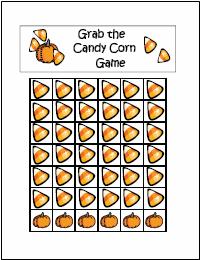
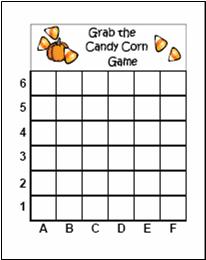
- Play
 Grab the Candy Corn Game which requires students to toss two dice, form an ordered pair, and remove a candy from that space, if possible. The game can be played with counters or with real candy for a holiday treat that is appropriate from Halloween through Thanksgiving. The file contains the gameboard, directions, candy counters and a recording sheet.
Grab the Candy Corn Game which requires students to toss two dice, form an ordered pair, and remove a candy from that space, if possible. The game can be played with counters or with real candy for a holiday treat that is appropriate from Halloween through Thanksgiving. The file contains the gameboard, directions, candy counters and a recording sheet.
- More Coordinate Graphing Activities from the Fall 2006 collection include a Jack-o-Lantern and a Mad Monster
-
 Halloween Point Plot
Halloween Point Plot
-
 Graphing Greenery challenges students to trace leaves on grid paper, then identify and list coordinate points so that classmates are able to recreate their leaves, using only the coordinates.
Graphing Greenery challenges students to trace leaves on grid paper, then identify and list coordinate points so that classmates are able to recreate their leaves, using only the coordinates.
More Seasonal Coordinate Graphing Resources
Consult these teacher resources for additional coordinate graphing activities, especially for the holidays. Look through closets as these are oldies-but-goodies. These activities introduce young math students to coordinate graphing and allow teachers to plan seasonal math activities that effectively develop math skills and concepts.

- Holiday Graph Art by Erling and Dolores Freeberg, published by Teacher Created Materials, Inc., 1987. This book contains graphing art directions for these fall activities: witch, jack-o-lantern, ghost, cat, owl, turkey, and Indian. See
 Teacher Created Materials Website to view sample pages from this book.
Teacher Created Materials Website to view sample pages from this book.
- Patriotic Graph Art by Erling and Dolores Freeberg, published by Teacher Created Materials, Inc., 1987. This book contains graphing art directions for these fall activities: Christopher Columbus' ship, Indian Girl, Indian Boy, Pilgrim Girl, and Pilgrim Boy. This book seems to be out-of-print but may still be available in teacher resource collections.
Fall Problem Solving
These open-ended assessments require students to apply mathematical concepts and skills to solve problems and explain their thinking using words, pictures and numbers.
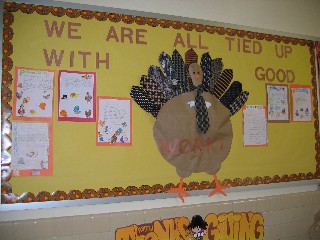
-
 Candy Corn presents a triangular numbers problem using a candy corn pattern. Younger students might use candy corn to model the problem. A sample solution shows how older students might use an input-output table to model the pattern and find the solution without the use of manipulatives.
Candy Corn presents a triangular numbers problem using a candy corn pattern. Younger students might use candy corn to model the problem. A sample solution shows how older students might use an input-output table to model the pattern and find the solution without the use of manipulatives.
- Younger students will enjoy analyzing and completing
 Fall Patterns. They should then classify the pattern and explain their reasoning as part of the class discussion. It is possible that students will see different patterns in some of the items so their explanation and justification are very important mathematical discourse.
Fall Patterns. They should then classify the pattern and explain their reasoning as part of the class discussion. It is possible that students will see different patterns in some of the items so their explanation and justification are very important mathematical discourse.
-
 Annual Fall Parade challenges students to use the triangular pattern to figure out how many students are in the fourth grade. Given the number of full rows, students must apply the pattern and use effective recording (picture, table, etc.) to explain their reasoning.
Annual Fall Parade challenges students to use the triangular pattern to figure out how many students are in the fourth grade. Given the number of full rows, students must apply the pattern and use effective recording (picture, table, etc.) to explain their reasoning.
- Solve
 Insect and Spider Problems. Given the number of legs and heads, students must figure out how many are insects (6 legs) and how many are spiders (8 legs). The pdf file is formatted to print out individual problem cards that may be placed in a math center for student use. Answer key cards are also included.
Insect and Spider Problems. Given the number of legs and heads, students must figure out how many are insects (6 legs) and how many are spiders (8 legs). The pdf file is formatted to print out individual problem cards that may be placed in a math center for student use. Answer key cards are also included.
- NOTE: A very effective strategy is for students to assume that all heads are insects and determine how many legs were used. Then they distribute the leftover legs, 2 to each insect to create spiders until all of the legs are used.
- Students might also use the
 Insect and Spider Problem Spreadsheet as a strategy that uses technology to help in problem solving. Right click on the link and save the spreadsheet to your computer for easy classroom use. The spreadsheet is already configured for student use. They should only type in the yellow spaces as the spreadsheet will compute the other columns. Use an overhead monitor or projection system to model using the spreadsheet.
Insect and Spider Problem Spreadsheet as a strategy that uses technology to help in problem solving. Right click on the link and save the spreadsheet to your computer for easy classroom use. The spreadsheet is already configured for student use. They should only type in the yellow spaces as the spreadsheet will compute the other columns. Use an overhead monitor or projection system to model using the spreadsheet.
- Challenge students to figure out how many things you receive in total during
 The Thirteen Days of Halloween or the simpler version renamed the
The Thirteen Days of Halloween or the simpler version renamed the  Twelve Days of Halloween.
Twelve Days of Halloween.
- Motivate students to try their hand at some code-breaking with Crypto-Lists for Halloween and Thanksgiving.
- See Pumpkin Problem Solving from the Fall 2005 collection involves repeating patterns, discrete math, Pascal's triangle and combinations.
- More Fall Problem Solving from the Fall 2006 collection includes Halloween word problems, Fall fraction words, Pascal's Bats and problems that require the use of an input-output table to analyze the pattern.
Fall Math-Literature Connections
Many books may be used as a springboard for mathematical discussions and activities. These are included to integrate fall themes into mathematics:
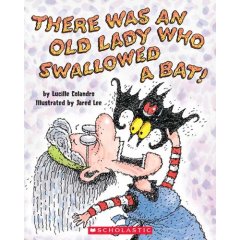
There Was an Old Lady Who Swallowed a Bat by Lucille Colandro
- After reading the book, investigate
 Batty Old Lady Probability, Students spin to collect all of the items the Batty Old Lady swallowed, and tally each spin on the recording sheet. They then calculate the total spins it took them to get all 7 items, and add that figure to the class data. Teachers may help students analyze the class data and learn about probability in the process. The pdf document includes directions, game mat, picture cards, spinner, recording sheet and writing to learn handout.
Batty Old Lady Probability, Students spin to collect all of the items the Batty Old Lady swallowed, and tally each spin on the recording sheet. They then calculate the total spins it took them to get all 7 items, and add that figure to the class data. Teachers may help students analyze the class data and learn about probability in the process. The pdf document includes directions, game mat, picture cards, spinner, recording sheet and writing to learn handout.
- Play the Fat Bat Game to explore the probablity of a one-die toss.
- See more Mathwire.com Bat Math Activities.
- Download
 Old Lady template to use in retelling the story
Old Lady template to use in retelling the story
- After reading, enjoy the original There Was an Old Lady Who Swallowed a Fly book, enjoy the
 Old Lady and Probability lessons.
Old Lady and Probability lessons.
- Use the
 Old Lady reproducible for students to design their own versions of the story.
Old Lady reproducible for students to design their own versions of the story.
- Use Scholastic's
 Edible Estimation suggestion to incorporate measurement into this book talk. Scroll down the Scholastic page to locate this section.
Edible Estimation suggestion to incorporate measurement into this book talk. Scroll down the Scholastic page to locate this section.

The Very Busy Spider by Eric Carle
- Have students complete
 Very Busy Spider Patterns: Math Mat - 1
Very Busy Spider Patterns: Math Mat - 1
- Have students complete
 Very Busy Spider Patterns: Math Mat - 2
Very Busy Spider Patterns: Math Mat - 2
- Have students complete
 Very Busy Spider Patterns: Math Mat - 3
Very Busy Spider Patterns: Math Mat - 3
- Solve Insect and Spider Problems to practice multiplication skills.
- Play Spider Math Games to explore coordinate graphing, probability or map coloring.
- See more Mathwire.com Spider Math Activities.
Ten Apples Up on Top by Theo Le Sieg

After enjoying the book, and counting the apples on the various pages, have students create counting booklets with a page for each number 1-10. They may draw that many apples on their head.
- Use
 Ten Apples Template to create booklets.
Ten Apples Template to create booklets.
-
 Ten Apples up on Top lesson plan provides counting and stamping experience to develop the mathematical ideas in the book.
Ten Apples up on Top lesson plan provides counting and stamping experience to develop the mathematical ideas in the book.
- See Mathwire.com Fall Math-Literature Connections for Additional Math Activities for this book.

Create the fall sequel booklet,  Ten Pumpkins Up on Top, in which students balance pumpkins on their heads. The pdf file contains a cover and a sample student page that may be copied so that students can draw pictures of themselves in costume, balancing 10 pumpkins. Or, create a class counting booklet with each student balancing increasing numbers of pumpkins, as assigned.
Ten Pumpkins Up on Top, in which students balance pumpkins on their heads. The pdf file contains a cover and a sample student page that may be copied so that students can draw pictures of themselves in costume, balancing 10 pumpkins. Or, create a class counting booklet with each student balancing increasing numbers of pumpkins, as assigned.
Additional Seasonal Math Activities on Mathwire.com
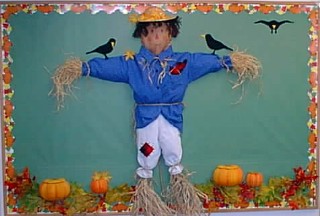
These math activities are organized by seasons. Elementary teachers often incorporate seasonal activities as craft projects. Many of these seasonal craft projects can be mathematical as well with a little forethought. Browse the activities for projects to add that reinforce mathematical concepts and skills through seasonal and holiday themes.
- Fall Math Activities 2006
- Fall into Math for fall and Halloween math activities [Fall 2005]
- Back-to-School Math Activities
- Winter 2006: Math Activities
- Winter Math Activities for winter and holiday math activities [Winter 2005]
- February Math Activities for Valentine's Day and Winter Olympics activities [February 2006]
- 100th Day of School Math Activities
- Earth Day Math Activities
- See all Mathwire Seasonal Math Activities
Links to Fall Math Activities on the Internet
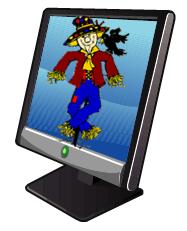
Teachers can find many shared activities on the internet. These activities integrate mathematical ideas using fall materials and themes. The activities address multiple mathematical strands (e.g. measurement, number sense, probability, estimation, money, data collection, etc.), making it possible for teachers to plan effective mathematics instruction that also captures students' seasonal interest. Use or modify the lessons to fit the needs of your students. Build upon the ideas shared by other teachers through internet sites. These are presented in alphabetical order by activity title.
-
 Candy Corns Are the Greatest uses candy corn to help students master the use of less than and greater than signs in inequalities.
Candy Corns Are the Greatest uses candy corn to help students master the use of less than and greater than signs in inequalities.
-
 Dem Bones Activities include pictures and a Dem Bones Data Collection activity sheet
Dem Bones Activities include pictures and a Dem Bones Data Collection activity sheet
- Students will enjoy connecting this online
 Dot-to-Dot Animated Scarecrow practicing number recognition for the numbers 1-48.
Dot-to-Dot Animated Scarecrow practicing number recognition for the numbers 1-48.
- Get lots of good ideas for
 Fall Data Collection Activities which include leaf math activities how many pennies will cover a leaf, sink a leaf, leaf sorting, etc. Scroll down the page to see pictures and explanations.
Fall Data Collection Activities which include leaf math activities how many pennies will cover a leaf, sink a leaf, leaf sorting, etc. Scroll down the page to see pictures and explanations.
- Math Cats
 Fall Math Idea Bank includes leaf math, spider web math and pumpkin math activities,
Fall Math Idea Bank includes leaf math, spider web math and pumpkin math activities,
-
 Greedy Grab encourages students to use their hands formed into a V to "grab" the larger amount, then write the sign the same way.
Greedy Grab encourages students to use their hands formed into a V to "grab" the larger amount, then write the sign the same way.
-
 Kelly's Kindergarten Fall Math Activities include Halloween Counting and Harvest Time activities.
Kelly's Kindergarten Fall Math Activities include Halloween Counting and Harvest Time activities.
- Scholastic's
 Multiplication Mysteries uses a haunted mansion to provide multiplication practice.
Multiplication Mysteries uses a haunted mansion to provide multiplication practice.
-
 My Book of Halloween and Shapes encourages students to recognize the basic shapes in Halloween pictures.
My Book of Halloween and Shapes encourages students to recognize the basic shapes in Halloween pictures.
-
 October Math Ideas include positive and negative space and pumpkin glyphs
October Math Ideas include positive and negative space and pumpkin glyphs
-
 Oh Nuts! Deluxe Game includes spinner on gameboard.
Oh Nuts! Deluxe Game includes spinner on gameboard.
-
 Oh Nuts Game includes pdf files for the file folder game mat and skill cards which include simple addition, telling time and counting money.
Oh Nuts Game includes pdf files for the file folder game mat and skill cards which include simple addition, telling time and counting money.
-
 Probabilities presents a Halloween spinner and challenges students to figure out the probabilities of different outcomes.
Probabilities presents a Halloween spinner and challenges students to figure out the probabilities of different outcomes.
-
 Pumpkin and Ghost Lima Bean Math includes suggestions for counting, comparing, patterning, and probability using these homemade Halloween manipulatives.
Pumpkin and Ghost Lima Bean Math includes suggestions for counting, comparing, patterning, and probability using these homemade Halloween manipulatives.
-
 Pump Up the Curriculum with Pumpkins offers many suggestions for pumpkin measurement: circumference, weight, number of ribs, seeds, etc.
Pump Up the Curriculum with Pumpkins offers many suggestions for pumpkin measurement: circumference, weight, number of ribs, seeds, etc.
- Little Giraffe's
 Roll a Turkey Game uses the probability of a single die to complete a turkey. To extend the probability math, first ask students to predict how many times they will have to toss the die to get all of the turkey parts. Then have students keep a tally of how many times they toss the die to complete their turkey. Lead a class discussion comparing the predictions and actual data to develop students' understanding of the probability of this one-die toss game. Students may use a
Roll a Turkey Game uses the probability of a single die to complete a turkey. To extend the probability math, first ask students to predict how many times they will have to toss the die to get all of the turkey parts. Then have students keep a tally of how many times they toss the die to complete their turkey. Lead a class discussion comparing the predictions and actual data to develop students' understanding of the probability of this one-die toss game. Students may use a  predotted turkey head and body, if desired.
predotted turkey head and body, if desired.
-
 Spider Unit for kindergarteners includes math activities
Spider Unit for kindergarteners includes math activities
-
 The Ultimate Halloween Resource for Teachers and Parents offers apple, pumpkin, autumn and spider units.
The Ultimate Halloween Resource for Teachers and Parents offers apple, pumpkin, autumn and spider units.
-
 Welcome to the Pumpkin Patch includes many math activities including glyphs, graphing, measuring, counting and sorting.
Welcome to the Pumpkin Patch includes many math activities including glyphs, graphing, measuring, counting and sorting.
-
 Witches' Broomhandles asks students to correctly place decimals on the broomhandle number lines.
Witches' Broomhandles asks students to correctly place decimals on the broomhandle number lines.

